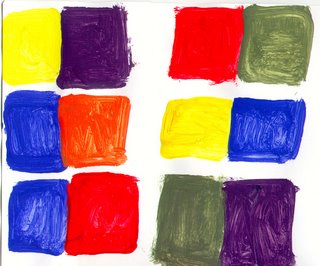To better study the colors using the color circle that helps you find complementary colors, that is, those colors that have the property of being very conflicting , to increase further with each other because they have no part in  common.
common.
Complementary colors are: Yellow
and PURPLE
GREEN and RED
BLUE and ORANGE
Looking good, we realize that, for example, purple consists of red and blue, so, with the yellow, we have all three primary colors. In the other pairs is the same.
White and black are achromatic colors. working with pigments (ie, with tempera or pastels or colored pencils) the black and white can be mixed among themselves and with other colors . Each color combined with white clears, mixed with black will darken. when mixing the white with black between them you get the gray . All these new colors that can not be named because they can be thousands, are gradations or shades .
AND NOW IT IS UP TO YOU
Making the board of complementary colors is very simple
The equipment required is the same as lesson 1
Put the paper vertically
then directly with a brush, paint two squares side by side: one yellow and a purple , beside a red and a green ; under a blue and orange one .
in the remaining area of \u200b\u200bthe sheet can be combined the contrasting colors, as did IVAN of cl. III

0 comments:
Post a Comment